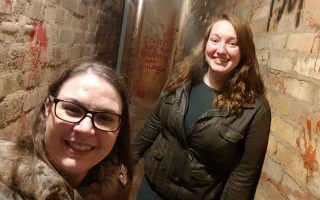This magnificent Elizabethan hall was built by the formidable Elizabeth Cavendish, later Elizabeth Talbot, more usually known as Bess of Hardwick, the most powerful and wealthiest woman after Queen Elizabeth I during her reign. The story of Bess is as fascinating as the hall she commissioned (she was greatly interested in architecture) and had the grand house built. It has been described as “Hardwick Hall, more glass than wall”. Since glass was so very expensive in those days, it was an overt display of wealth.
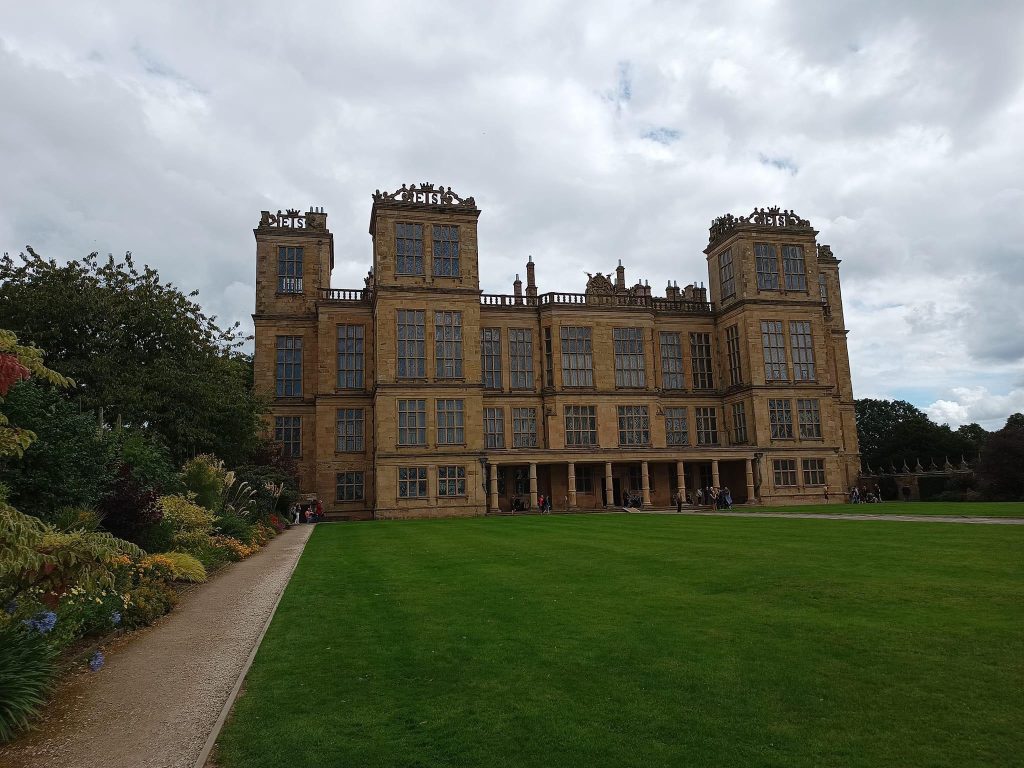
The story of Bess is as fascinating as the hall. Although one of the members of the minor gentry, she made a series of advantageous marriages, which together with her shrewd business sense, elevated her to great wealth and power.
Her first marriage was of little consequence, it is unlikely that the marriage was even consummated, and Bess had to fight for years to get her widow’s entitlement to the estate. The second marriage saw her first rise up the ranks when she married Sir William Cavendish (this union is where the Dukes of Devonshire trace their lineage). It was Bess who persuaded Sir William to sell his lands down South and buy the Chatsworth estates, still the main home of the Dukes. When Sir William died, Bess was left with six children and in debt to the crown.
Her third marriage saw a change of fortune (literally) for Bess. Sir William St Loe held high positions at court and he used his influence to reduce her debt to the crown. Sir William died in suspicious circumstances, believed to have been poisoned by his younger brother, and left all of his very considerable fortune to Bess. She was now one of the wealthiest women in Britain and a lady of the bedchamber with daily access to the queen.

Bess took her time to marry again. Her fourth marriage was to George Talbot, Earl of Shrewsbury and one of the top aristocrats in the kingdom. After their marriage, he had the dubious honour of being the custodian of Mary, Queen of Scots along with his wife. Bess and Mary worked together on many tapestries over the 15 years she was in the custody of the Earl and Countess. These tapestries became part of the collection at Hardwick Hall. Mary was not an easy “guest”. The couple were played against each other by Mary and their marriage eventually broke apart. Mary convinced the Earl that Bess was stealing from him. Bess alleged that George and Mary had an affair. She later withdrew the allegation. The queen even tried to reconcile the couple, but they remained separated. As a side note, the couple were good custodians of Mary, despite her causing so many difficulties for them, and it’s only when she was moved into the care of someone else that she started becoming embroiled in the plots that ultimately led to her execution.
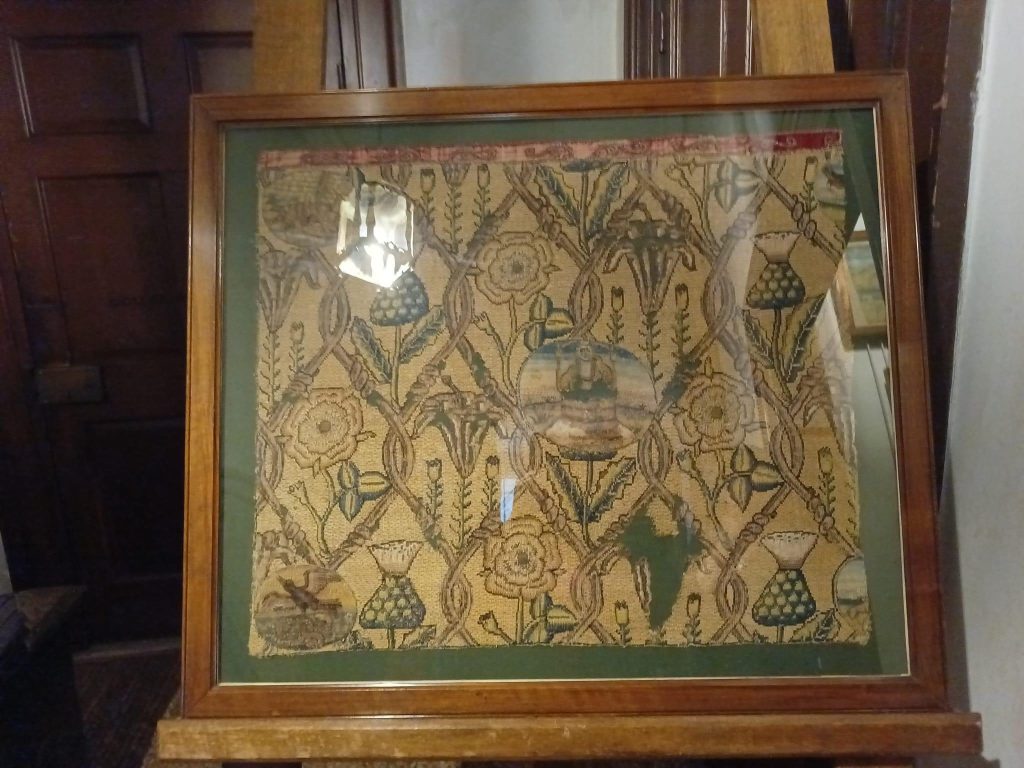
The fascinating life (trust me, you’ve been given the abridged version) doesn’t end there. She arranged for one of her daughters to be married to the son of the countess of Lenox, who was the niece of Henry VIII. This caused quite a furore as any marriage to a member of the royal family required the consent of the queen. The countess of Lenox spent time incarcerated as a consequence. Bess ignored the summons to attend an inquiry. The marriage produced a daughter, Arabella, who was a potential successor to Elizabeth I. Arabella spent most of her time with her grandmother, who desperately wanted her granddaughter to be queen. Their relationship was strained by the desire of Arabella to elope, which she eventually did. Arabella met with a tragic end, dying, imprisoned in the Tower of London by her cousin, King James.
Back to the fascinating Bess. Her royal connections continue to this day. Our King can count Bess as one of his ancestors through his grandmother. The Dukes of Rutland, Devonshire and Newcastle can trace their lineage back to Bess. The home of the Duke of Devonshire is Chatsworth, another of the properties that was heavily influenced by Bess and a sometime “prison” of Mary, Queen of Scots.
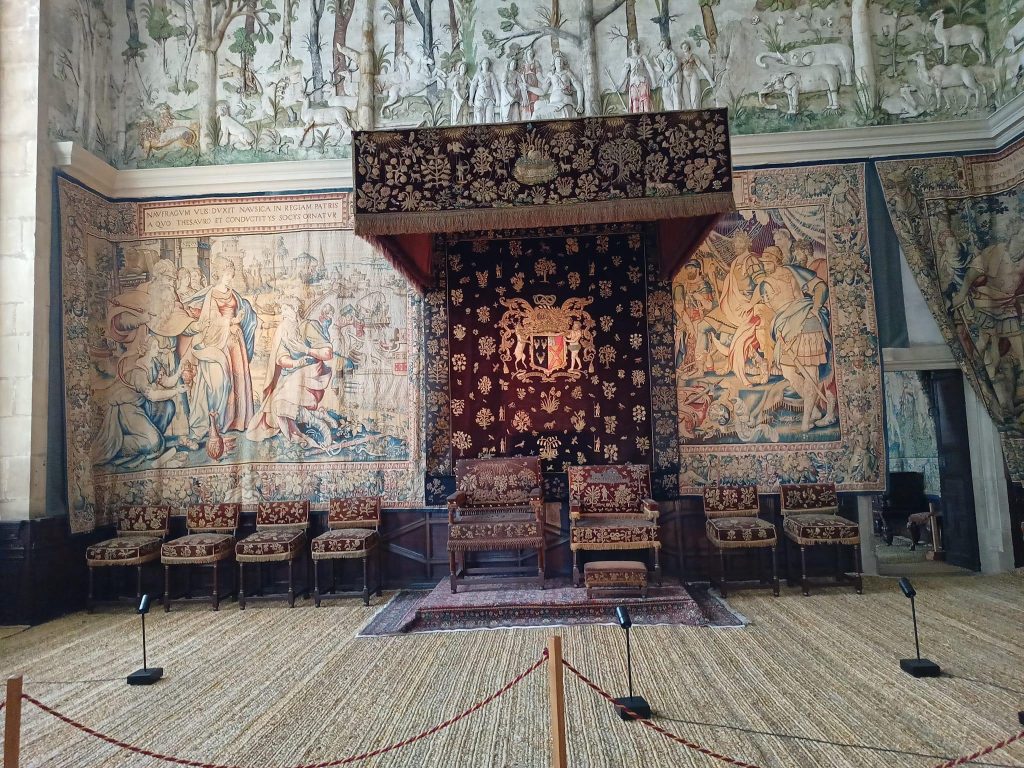
We return to the break up of Bess’s fourth marriage. Bess retreated to her family home, Hardwick Hall (now know as Hardwick Old Hall). From there she supervised the building of her grand new Hardwick Hall. The hall was an early example of a new style of grand houses. It’s one of the very few surviving from the Elizabethan period and has been described as one of the grandest houses in England. It is believed to be the first house designed by an architect, the design was chosen by Bess. It was during the building of the hall that the Earl died, leaving Bess a widow for the fourth time.
The design of the hall was very unusual for the time. Chimneys were incorporated into the building, allowing for more windows on the outside. The ceiling of each floor is higher than the previous ceiling. This was an indication of the importance of who resided on each floor. The more important were in the upper rooms with high ceilings and equally higher windows. Bess chose the materials for the construction of the house, then decorated and filled it with rich tapestries (many of which she had probably worked on herself), portraits and furnishings.

Today the house and grounds are owned and run by the National Trust. English Heritage owns and runs the Old Hall. They are currently working in partnership and you can visit both with either membership. It’s uncertain for how long that will continue.
The car park is quite large, but still gets very full as a lot of hikers and dog walkers visit the grouds. You need to pay (unless you have a membership) to visit the hall and gardens, but it’s well worth it. The last Duchess of Devonshire to live there died in 1960, but she had taken the duty of maintaining the hall as seriously as the Cavendish families before her and the house was passed to the Trust in good condition.
Once you leave the ticket office, you pass through a huge lawned area that is usually set up with traditional games which everyone is welcome to play. The stables have been converted to a canteen and there are ample toilets. It’s worth “paying a visit” before you go up to the house and gardens as there are a far more modest number of conveniences just as you exit the house. As is often the case, there are overpriced plants for sale.
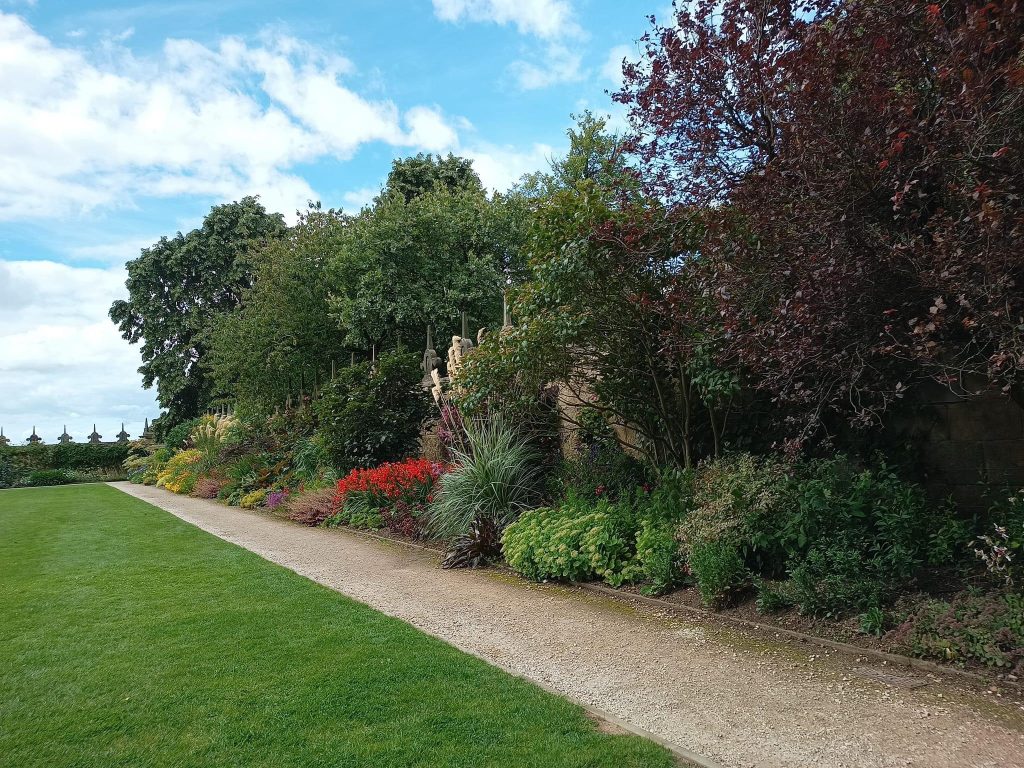
It’s quite a walk from the car park to the hall. If you have been before, the entrance has moved and you now enter through a gap in the hedge and walk through the garden, so wheelchair users may find this a bit of a challenge. It also takes away your first sight of this beautiful house from the front gate. It is so much more impressive if you first see the front of the hall as it was intended to be seen. It was built to impress, and it’s splendor slams into you when you see it from the front. What is even more surprising is that you could mistake it for a more modern stately home. It’s hard to believe it’s Elizabethan.
The house is still full of many the tapestries that Bess accumulated, and some bear her initials, so may have been worked on by the countess herself as she was known to be an accomplished and talented needlewoman. Tapestries were extremely expensive. The tapestries have even been cut to fit the walls, or patch shapes around stairs and windows. Yet another display of Bess’s wealth.

Portraits line the walls and include ones of royalty, including Mary. Many pieces of unusual and rare furniture lie around the house. The decoration is lavish. There are items of armour and weaponry. A great deal of the house is open to explore. The route is laid out to take you from the ground floor to the upper floors, taking in as much of the grandeur as you can. Some sections, especially where rooms are roped off, can get quite crowded. Being a very old house and in the original design, the access to the floors is by stairs, which may be a challenge for those with mobility issues.

The gardens are quite beautiful. There has clearly been a lot of work put in to creating wide beds full of unusual flowers and plants.
The Old Hall is little more than a ruin, but that too must have been a great house. A much older design. The upper floors were closed due to being unsafe when we went, so there wasn’t much to see. But it’s also quite a surreal experience to see what are clearly inside walls now as outer walls.
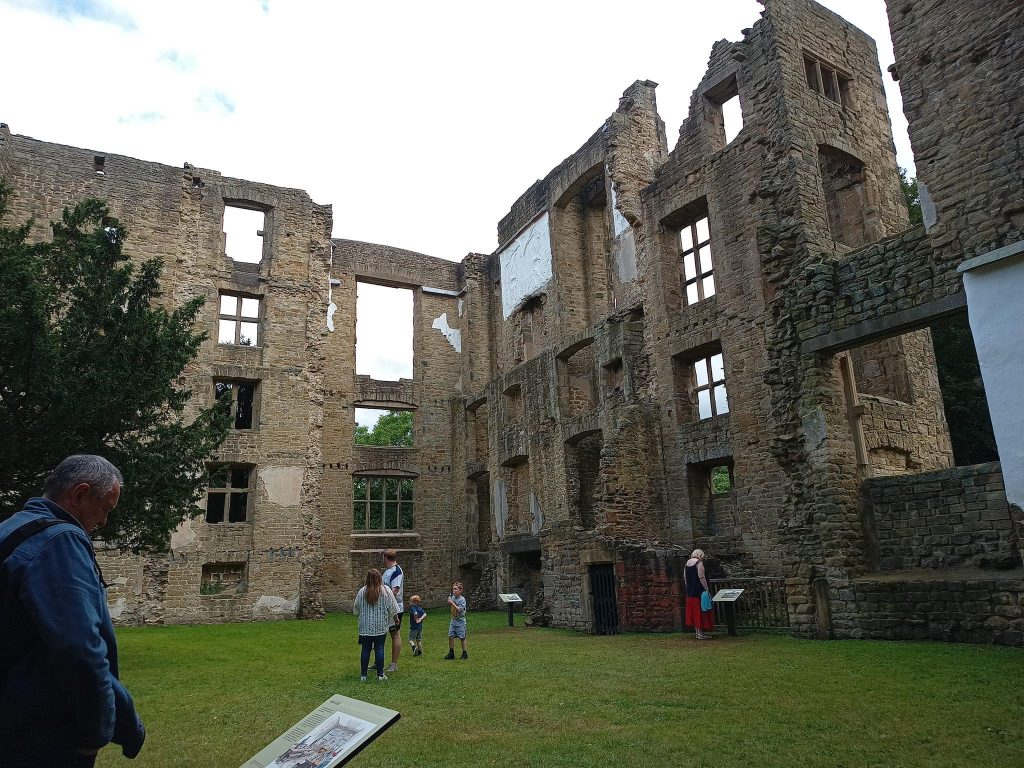
Hardwick is a must if you enjoy visiting stately homes. It probably inspired most of the stately homes that came after it. It’s easy to imagine the formidable Countess sweeping around, directing the running of the house and estate and it is quite clear that this was a home that had a lot of thought put into it. It’s somewhere I’ll happily return to time and time again.




